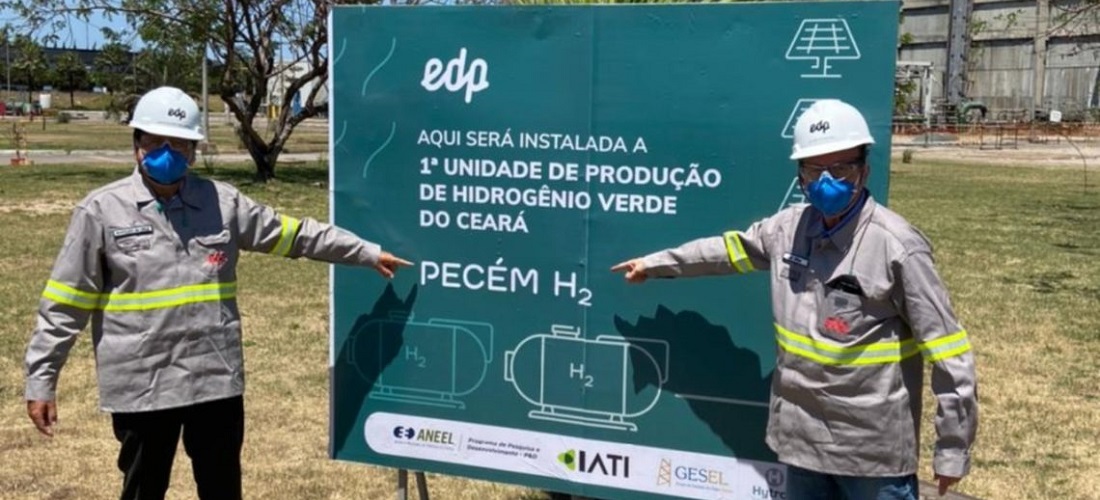
Brazil’s Ceará builds hub to produce, export green hydrogen
Feb, 01, 2022 Posted by Sylvia SchandertWeek 202205
The state of Ceará is designing a hub with the capacity to produce at least 500,000 tonnes of green hydrogen per year, equivalent to around 2.5 million tonnes of green ammonia, and export to Europe on a shipping route from the Port of Pecém to its trading partner, the Port of Rotterdam, in the Netherlands.
The state government sees green hydrogen (H2V) as the fuel for the future. To be considered ‘green,’ the product must be obtained through renewable sources, such as wind or solar power. It cannot generate greenhouse gases, such as carbon dioxide, even during its use.
Named the Ceará Green Hydrogen Hub, the space installed in the Pecém Industrial and Port Complex (CIPP) was launched this year in partnership with the Federal University of Ceará (UFC) and the Federation of Industries of Ceará (FIEC). The idea is to seek new investments, expand business opportunities, and create jobs in the state.
So far, 18 Memoranda of Understanding (MoUs) have been signed with national and foreign companies to implement projects in the hub.
Green hydrogen
The use of green hydrogen ranges from cars to industries. “There is the possibility of having vehicles fueled with hydrogen, heating households and even using it in industries currently powered by coal,” explained professor Fernando Melo Nunes, from the UFC Technological Park, who coordinates the team of academy researchers involved in the project.
In a telephone interview, Nunes explained hydrogen production is mainly carried out by electrolysis, which removes the element from water. “Energy is consumed to separate hydrogen from oxygen, in the form of water, in this electrolysis process. For it to be ‘green,’ wind and solar power are mainly used. In Ceará, both are very abundant,” explained Nunes.
Water, however, is a scarce resource in the state. “Therefore, the idea is to use desalination or reuse water; the latter can be treated sewage water,” added the professor.
Relative to transporting the obtained hydrogen, Nunes says it is possible through its gaseous, liquefied form or by converting the element into ammonia. The first and second forms are less used, and the expectation is for the product from Ceará to be transported in the form of ammonia.
The professor explains the requirements of the Export Processing Zone (ZPE), the group that controls the Port of Pecém, is for 20% of hydrogen production to be used internally. “The university has been researching hydrogen for a long time. Only now has it been seen that being green, that is, made without carbon and without generating carbon, is the factor that will decarbonize the planet. By 2030, Europe wants no more hydrocarbon-powered cars to be produced, for example,” he said.
Companies already confirmed in the project must use energy in the production process that corresponds to Brazilian consumption over a year. “Together, they can reach 17 gigawatts, very close to Brazilian consumption. They will not produce all that from the beginning, of course, but each plant should have the potential to have 2 to 3 gigawatts. The most advanced companies are Engie and Fortescue,” said Nunes, mentioning the Brazilian and Australian companies.
The researcher recalls to generate this energy volume; companies can resort to possibilities such as generating wind power at sea and placing photovoltaic plants in water reservoirs. “There is even an experience like this in Sobradinho [in the state of Bahia], with floating solar plates. And that increases yield. These are solutions to improve the environment and the world,” he concluded.
Source: ANBA
To read the full original article, please visit the link:
https://anba.com.br/en/brazils-ceara-builds-hub-to-produce-export-green-hydrogen/
-
Automotive
Mar, 02, 2022
0
Felicity Ace Sinks with $400M in Lost Cars During Tow off Azores
-
Ports and Terminals
Dec, 22, 2020
0
Santos Port Authority receives first bids for transitional contracts
-
Ports and Terminals
Oct, 03, 2023
0
Port of Itajaí operator selection takes unexpected turn as top bidder disqualified
-
Dec, 07, 2021
0
CDRJ acquires radars to monitor waterway traffic at ports


